Two identical He-filled spherical balloons each carrying a charge q are tied to a weight W with strings and float in equilibrium, as shown in figure.
(i) Find the magnitude of q, assuming that the charge on each balloon acts as if it were concentrated at the center.
(ii) Find the volume of each balloon. Take the density of He as ρHe and the density of air as ρa. Ignore the weight of the unfilled balloons .
 ,
,
The correct Answer is:√8Wtanθπε0X2
Step by step video & image solution for Two identical He-filled spherical balloons each carrying a charge q are tied to a weight W with strings and float in equilibrium, as shown in figure. (i) Find the magnitude of q, assuming that the charge on each balloon acts as if it were concentrated at the center. (ii) Find the volume of each balloon. Take the density of He as rho_(He) and the density of air as rho_(a). Ignore the weight of the unfilled balloons . , by Physics experts to help you in doubts & scoring excellent marks in Class 12 exams.
Updated on:21/07/2023Topper's Solved these Questions
- ELECTROSTATICS - I BOOK - MOTIONCHAPTER - ELECTROSTATICS - I EXERCISE - EXERCISE - 3 (Level -II) (Section B)
3 Videos
- ELECTROSTATICS - I BOOK - MOTIONCHAPTER - ELECTROSTATICS - I EXERCISE - EXERCISE - 3 (Level -II) (Section C)
4 Videos
- ELECTROSTATICS - I BOOK - MOTIONCHAPTER - ELECTROSTATICS - I EXERCISE - EXERCISE - 3 (Level -I) (Section F)
7 Videos
- ELECTROSTATICSBOOK - MOTIONCHAPTER - ELECTROSTATICSEXERCISE - Exercise -3 Section (B) Previous Year Problems | JEE Main
30 Videos
- ELECTROSTATICS-IIBOOK - MOTIONCHAPTER - ELECTROSTATICS-IIEXERCISE - Exercise - 4 (Level - II)
30 Videos
Similar Questions
Two similar helium-filled spherical balloons tied to a 5g weight with strings and each carrying a charge q floats in equilibrium as shown in figure−1.457. Find (a) the magnitude of q, assuming that the charge on each balloon acts as ifit were concentrated at the centre and (b) the volume of each balloon. Neglect weight of the unfilled balloons and take density ofair 1.29kg/m3 and the density of helium in the balloons 0.2kg/m3:
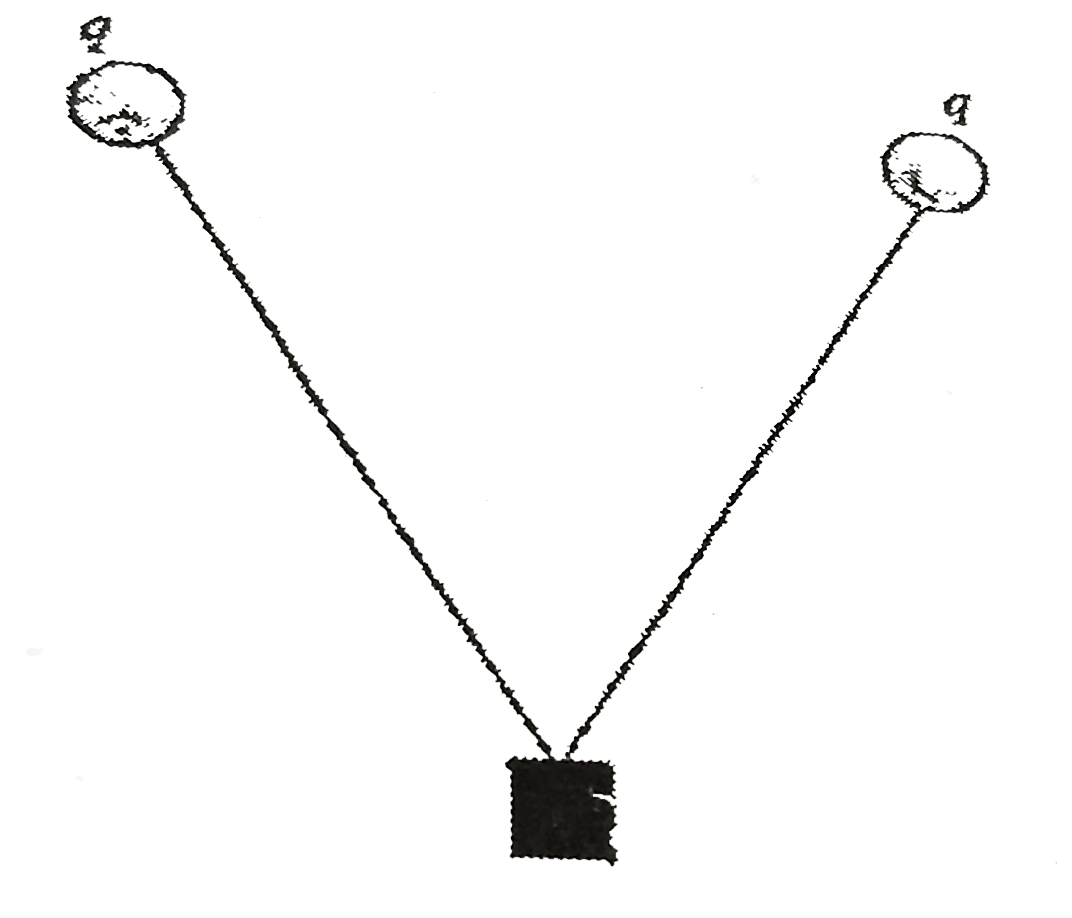
View SolutionTwo identical helium filled balloons A and B fastened to a weight of 5 g by threads floats in equilibrium as shown in figure. Calculate the charge on each balloons, assuming that they carry equal charge.
View Solution
Knowledge Check
_E01_093_Q01.png)
A ballong filled with air is weighted so that it barely floats in water as shown in figure. When it is pushed down so that it gets submerged a short distance in water then the balloonAwill come up again to its former positionBwill remain in the position it is leftqCwill sink to the bottomDwill emerge out of liquid.
Two identical helium filled ballons A and B fastended to a weight of 5 gram by threads float in equilibrium as shown in fig. Calculate the charge on each ballon, assuming that they carry equal charges.
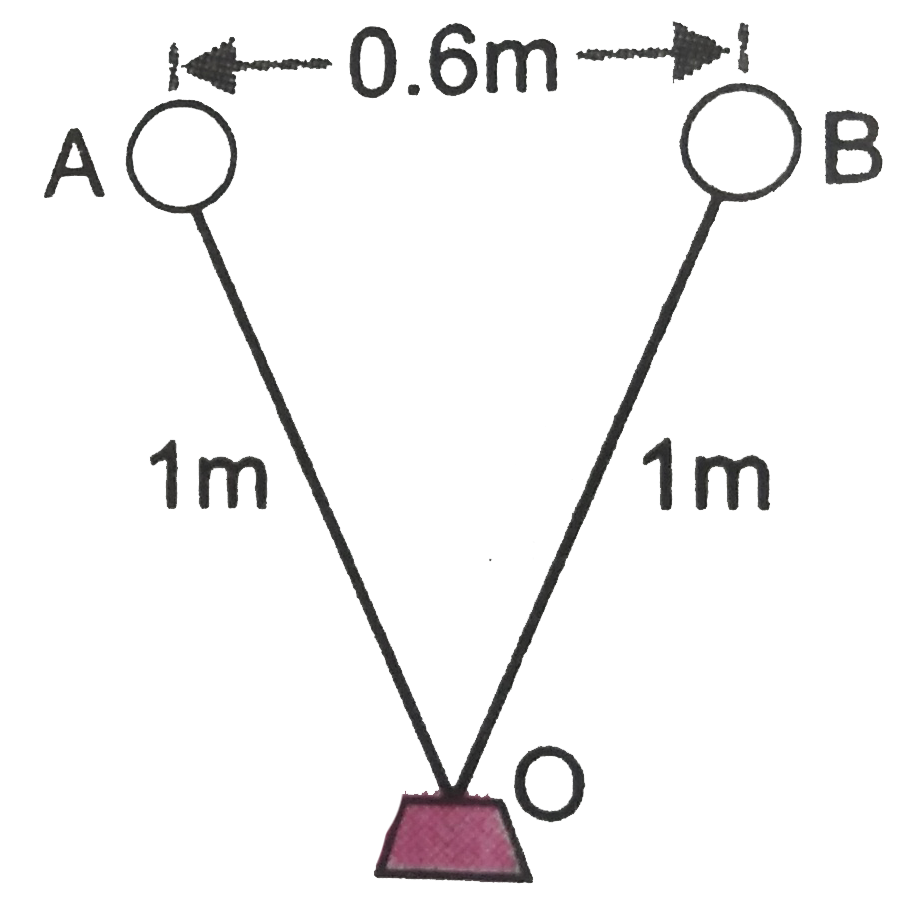
View SolutionTwo identical small charged spheres, each having a mass m, hang in equilibrium as shown in fig. the ligth of each string is l, and the angle made by any string with the vertical is θ. Find the magnitude of the charge on each sphere.
View SolutionTwo indentical pith balls, each carrying charge q, are suspended from a common point by two strings of equal length l. Find the mass of each ball if the angle between the strings is 2θ in equilibrium.
View SolutionTwelve charges have been placed at the centre of each side of a cube as shown in the figure. Find the magnitude of Electric force acting on a charge Q placed at the centre of the cube. Take the side length of the cube to be r.
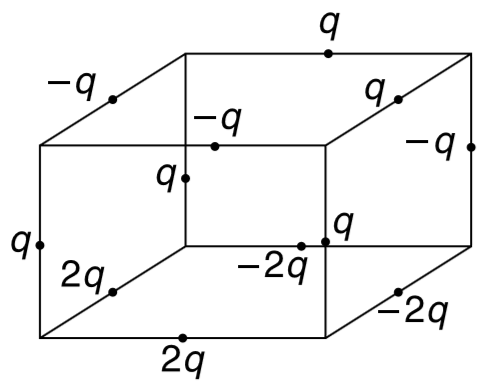
View SolutionThree points charges =q, -2q, +q are arranged on the vertices of an equilaterial triangle as shown in the figure. Find he dipole moment of the system.
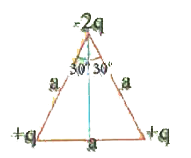
View SolutionTwo identical, small, charged spheres, each having a mass of 4.0×10−2kg hang in equilibrium as shown in Fig. 22-10a. The length of each string is 1.5m and the angle θ is 37.0∘. Find the magnitude of the charge on each sphere.
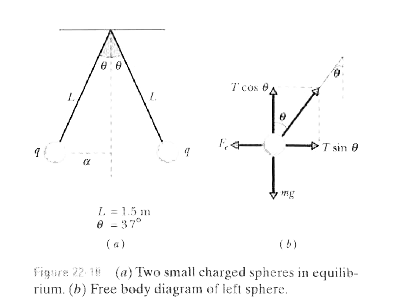
View SolutionTwo small identical balls P and Q, each of mass 0.866 g, carry identical charges and are suspended by two threads of equal length 50 cm each from the same point. At equilibrium, they are separated by a distance of 50 cm. Find the charge on each ball (in nearest integer in nC).
View Solution
